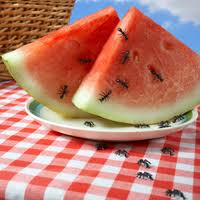Food processing facilities are already attractive to pests, and with this year’s nearly nonexistent winter and early spring, pest activity has greatly increased.
 As a result, pests such as flies, rodents and Indian meal moths may seek out your facility for food and survival at a greater rate than usual. Before they do, make sure you take the necessary precautions to keep them from affecting your products and your bottom line.
As a result, pests such as flies, rodents and Indian meal moths may seek out your facility for food and survival at a greater rate than usual. Before they do, make sure you take the necessary precautions to keep them from affecting your products and your bottom line.
Rodents
Rodents at your facility can create a very serious health situation, as they are known to spread E. coli, Salmonella and other disease-causing organisms. Rodents’ rapid rate of reproduction increases this health threat: A female mouse can produce up to ten litters in one year, birthing six mice in each litter. It only takes 35 days for mice to reach sexual maturity, which means females can reproduce on their own in just over a month.
To help prevent infestations at your facility, consider implementing these proactive methods:
- Rodents don’t like to be out in the open, so trim all shrubbery and bushes back from the building, as they can often serve as hiding spots for rodents.
- Install a 30-inch-wide gravel strip around the building’s exterior to create an open space that deters rodents from crossing it to gain access to your facility.
- Eliminate moisture and water sources both inside and outside the building.
- Rodents can slip into buildings through holes as small as coins (for example, a dime-size hole for a mouse), so seal all cracks and crevices with weather-resistant sealant to prevent them from getting inside. Incorporate copper mesh or steel wool to deter rodents from chewing through the seal.
- Implement an inspection program to check incoming shipments for signs of rodent infestation using a black light.
- Look for signs of an infestation, including droppings and gnaw marks, inside and outside of your facility. Rodents often feel protected when they crawl along walls, so be wary of greasy rub markings, too.
- Focus on sanitation at your facility by immediately cleaning spills, keeping the employee break room clear of leftover food, sanitizing waste disposal areas and following a dumpster rotation schedule.
Flies
Flies can pose a serious health threat to your facility and products. Known to carry more than 100 pathogens on their bodies, flies transmit bacteria such as Staphylococcus, E. coli, Salmonella, Shigella and Cingulum each time they land. Due to their small size and quick speed, flies can get inside building openings easily, whether through doors or windows.
Follow these steps to help ensure flies do not gain access to your building:
- Install a set of double doors as an extra barrier after flies slip through your facility’s exterior doors. In addition, vinyl strip doors should be installed in areas of heavy traffic and quick movement. This will allow employees to do their jobs without any hindrances, while helping keep flies out.
- Work with an HVAC professional to create positive airflow that blows toward your facility’s exits. This will help push flies and other pests away from your products and out of the building when doors are opened.
- Flies are especially attracted to food and grease buildup, so use an organic cleaner to sanitize dumpsters, as well as waste disposal areas and floor drains inside your facility.
- These pests are attracted to the odors that emanate from dumpsters and waste disposal areas. It is important to follow a cleaning and rotation schedule for all outdoor dumpsters and keep trashcans and recycling bins covered. Always remember to use liners to prevent food and waste buildup on trashcans at your facility.
Stored Product Pests
Stored product pests, which include a variety of flying and crawling insects, can infest your products at any time during the supply chain process. Although they are known to eat a wide range of whole grains, flour, cereals, seeds and feed, stored product pests can damage more than they can eat. This season, it is especially vital that you look out for stored product pests like Indian meal moths, which are external infesting insects. Their larvae eat from the outside of the grain into the kernel. These pests can lay 60 to 300 eggs on food surfaces at a time, and these eggs hatch in two to 14 days.
Protect your facility and products from stored product pests by taking these guidelines into consideration:
- Keep products 18 inches away from the wall and 6 inches off the floor to prevent easy access for pests.
- Carefully inspect all incoming shipments for signs like webbing, damaged packaging or ingredients, and insects and their larvae.
- Monitor your products’ storage conditions for moisture, proper ventilation and temperatures. Most stored-products pests cannot survive temperatures below 65 degrees Fahrenheit, so consider storing your products at this temperature if there will be no side effects.
- Keep an eye on stored-product pests and their activity by implementing a pheromone monitoring program.
By taking these steps at your facility, you’ll help ward off these aggressive pests this season, protecting not only your products and bottom line, but also your reputation.
